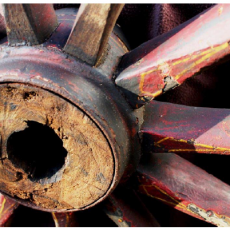Description
Composite Man is an art song from the Cracked Voices song cycle, set for soprano, clarinet and piano written by Graham Palmer and Jenni Pinnock.
Programme note
In the 1870s fossils of all sorts – including hippopotamus bones – were being dug out of the ground at Barrington and beyond. Soon the Sedgwick Museum in Cambridge had enough bones from different hippopotamuses to construct a complete skeleton. By fixing them all to a specially made metal armature they created their own Frankenstein’s monster: a composite animal.
But the coprolite pits were not about finding exhibits. The burgeoning population needed food and the fossils, when ground-up and treated with chemicals, were a highly effective, and highly profitable, fertiliser. Fossils were a cash crop.
At the workings, the labourers hand-dug trenches up to 6 metres deep before collapsing the exposed face. Accidents were commonplace and many men were buried alive – enough to form a composite man.
Most of the victims have no memorial other than the churches that were refurbished with the profits from their industry. This song is for all of them.
Performance notes
Composite Man is a duet between Louisa Seaborne and her coprolite digger husband. All scores in the song cycle are presented as transposed scores with the exception of this one which is in C to make it clearer; this is because the baritone and soprano have different key signatures, each to represent their differing states of being, and being suitable for their different songs (baritone in C minor, soprano in E flat minor). The clarinet part holds the two together, providing key linking phrases to ensure the performers can pitch their notes in this difficult piece. The soprano and baritone’s songs start off separately (presented line by line), before intertwining more and more as the piece continues – with the clarinet weaving between both.




